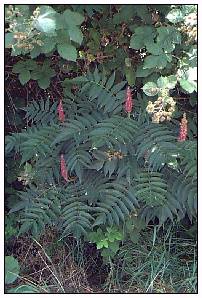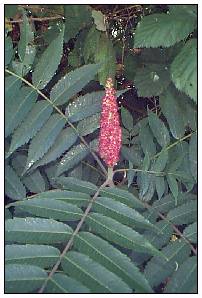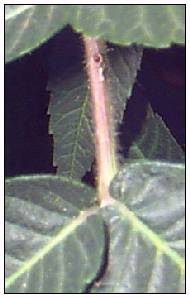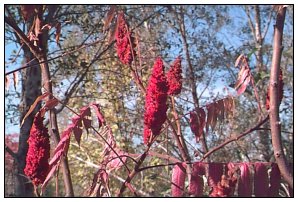 Medford Station 15: A Pretty Fuzzy Tree
Medford Station 15: A Pretty Fuzzy TreeMedford Station 15: A Pretty Fuzzy Tree
ALTHOUGH RELATED TO POISON OAK, the staghorn sumac (Rhus typhina) is safe to touch. Its branches are covered with short, reddish-brown hairs like a deer's antlers in "velvet." Thus the name. The staghorn sumac blooms in June and July, producing tiny greenish flowers that turn into clusters of fuzzy crimson fruits that last most of the winter. Because it is atrtractive nearly all year round, it is a popular ornamental tree, growing up to 30 feet high. At one time, its bark was an important souce of tanin, used to tan leather, and its sour fruits were used to make a kind of lemonade.




On the ground in front of the sumac you will see bedstraw (Galium sp.), a small vine with leaves that whorl around the stem. Touch it. It is covered with tiny hooks that help it cling to other plants, and to you. Its seeds are similarly equipped for clinging to passing animals, an efficient dispersal system. Growing on the bank behind you is vetch, a member of the pea family often used as a cover crop. Vetch and other legumes, like alfalfa, have nodules on their roots that help replenish nitrogen in the soil. There are several species of vetch, both native and from Europe, that have escaped cultivation and now replenish the soil of our roadsides.
